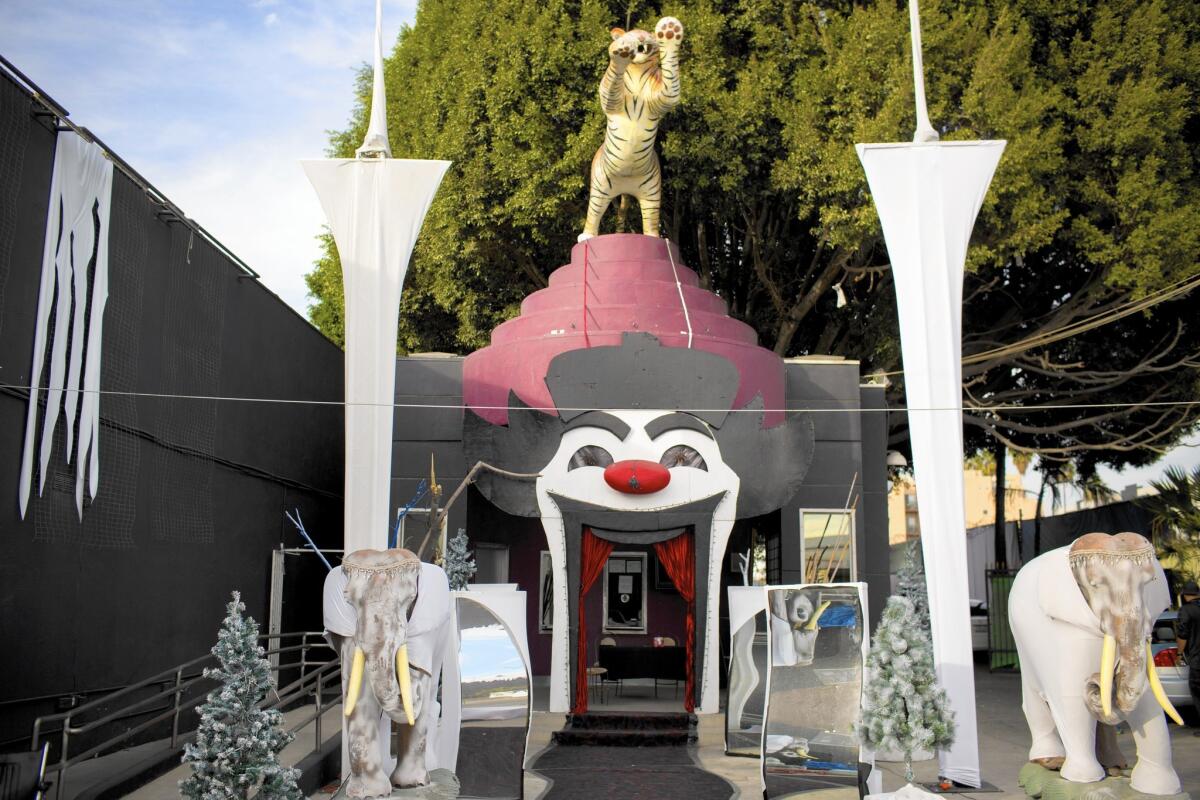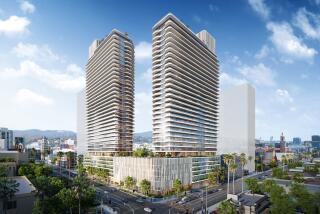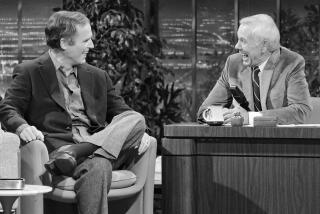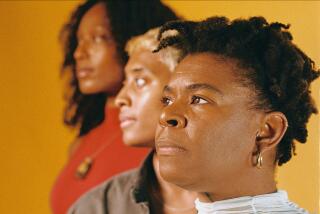Deal with developers will recognize Circus Disco’s place in Hollywood gay history

Just before Danny Muñoz could reach the man who had caught his eye, someone else whisked the stranger off to dance.
So Muñoz waited under the flashing lights for him to return. They started talking. They danced to Donna Summer. They began to fall in love in the cavernous club, a love that would one day lead to marriage.
“In other discos you felt like you had to be a certain way. Act a certain way. Dress a certain way,” Muñoz, now 66, remembered. “Not at Circus Disco.”
For decades since the disco opened in 1974, clubgoers strolled through its outlandish entrance — the gaping mouth of a cartoonish clown — to dance and flirt and feel at home. It was an exuberant gay hot spot that didn’t shut anyone out. Not gay men. Not their female friends in high heels. And not Latinos like Muñoz, who were often turned away at other gay clubs.
Your own family has rejected you. So you create a new family of people like yourself.
— David Hiovich, Circus Disco regular
Circus Disco was recently closed and hundreds of new apartments are being planned in its place, part of a sweeping plan to redevelop the Hollywood site. But historic preservationists say they have struck a deal with the developers, one that could recognize the club’s history without halting plans for new housing, shops and restaurants.
Under the agreement, real estate developer AvalonBay Communities has promised to spare many of the remaining features of the old disco, including its dance floor, neon ceiling lights and that fanciful clown entrance, and incorporate them into the project. One of the club’s mirrored balls, for instance, will hang in an elevator lobby leading up to apartments, the company said Thursday.
Richard Adkins, president of the preservation group Hollywood Heritage, said the agreement will save almost all the remaining historic artifacts at the building. The company will also support making the location a historic site, eventually putting up an exhibit there for visitors to learn about its past. And a walking path on the site will be named Circus Way.
It was “a creative solution — a solution that will tell the story of Circus Disco to future generations,” said Mark Janda, senior vice president of development for AvalonBay Communities.

In return, Hollywood Heritage pulled back its original proposal to make the building itself into a historic monument — a step that could have made it harder to tear down or alter the former warehouse off Santa Monica Boulevard. Historic preservationists had discovered that half of the original club had been torn down decades ago, which would have made it difficult to enshrine the building itself as a monument.
Even if that weren’t the case, Adkins said the group’s ultimate goal was not to preserve the club’s architecture but to recognize the role it played as a haven for Latinos and other men of color who were routinely excluded from other gay nightclubs.
Muñoz remembers the tension of waiting outside other clubs that would “pick and choose,” wondering if he would be let in. At Circus Disco, he said, the only reason people were shut out was the fire code.
Decades ago, Muñoz said, he “practically lived there.” His husband, David Hiovich, said he used to go five times a week. There were the electric nights of disco, fun-house mirrors and circus but also Sunday afternoon barbecues with hot dogs and hamburgers long before the dance floor became so crowded that you could barely walk through.
“We called ourselves a family. Your own family has rejected you. So you create a new family of people like yourself. And that’s who you celebrated birthdays with, that’s who you celebrated holidays with, who you went out to eat with,” said Hiovich, 59. “It was an oasis from the rest of the world.”
Los Angeles had recently listed Circus Disco as an important site in a survey of historic locations important to the lesbian, gay, bisexual and transgender community, but Adkins said the study hadn’t been published when the environmental analysis for the Santa Monica Boulevard development was being prepared. That analysis, prepared for a previous owner, said that none of the affected buildings appeared to be eligible for historic protection.
Preservationists have been fearful that L.A.’s LGBT history could be lost to redevelopment.
Many gay clubs of decades past were “at sites that once were kind of marginal, kind of undercover,” said Adrian Scott Fine, advocacy director for the L.A. Conservancy. “Today that’s not the case. The real estate market is at a point now where these sites are highly valuable for development.”
His group has raised concerns about plans to redevelop the West Hollywood site that once housed the Studio One disco. Historic preservationists also mourned Jewel’s Catch One, which catered to black LGBT clubgoers, when it closed its doors in Arlington Heights last year. A new owner has said he plans to reopen it this year with a different name and broader clientele.
See more of our top stories on Facebook >>
When gay life was in the shadows, before the Internet made it easy to find other gay men, Circus Disco was more than just a place to have fun, Hiovich said.
“It was a place to go and be around your tribe,” Hiovich said, his voice wavering. “And to feel that it’s OK.”
Twitter: @LATimesEmily
Times staff writer August Brown contributed to this report.
ALSO
Bizarre birth defect is on the rise, and researchers are baffled
Here’s what the academy may do about the #OscarsSoWhite boycott
What a 10,000-year-old massacre can tell us about the origins of human violence
More to Read
Sign up for Essential California
The most important California stories and recommendations in your inbox every morning.
You may occasionally receive promotional content from the Los Angeles Times.











